In nature’s grand theater, color plays a leading role—and nowhere is this more evident than in the spectacular plumage displays throughout the animal kingdom. From the iridescent shimmers of tropical birds to the startling patterns of certain insects, bright coloration serves numerous evolutionary purposes including attracting mates, warning predators, and providing camouflage. These natural color displays often rival or surpass anything humans can create, utilizing complex structures that manipulate light rather than simple pigments. This exploration takes us through some of the most dazzling feathered and scaled performers on Earth, examining not just their appearance, but the fascinating biological mechanisms and evolutionary advantages behind their chromatic splendor.
The Physics of Feather Color: More Than Meets the Eye
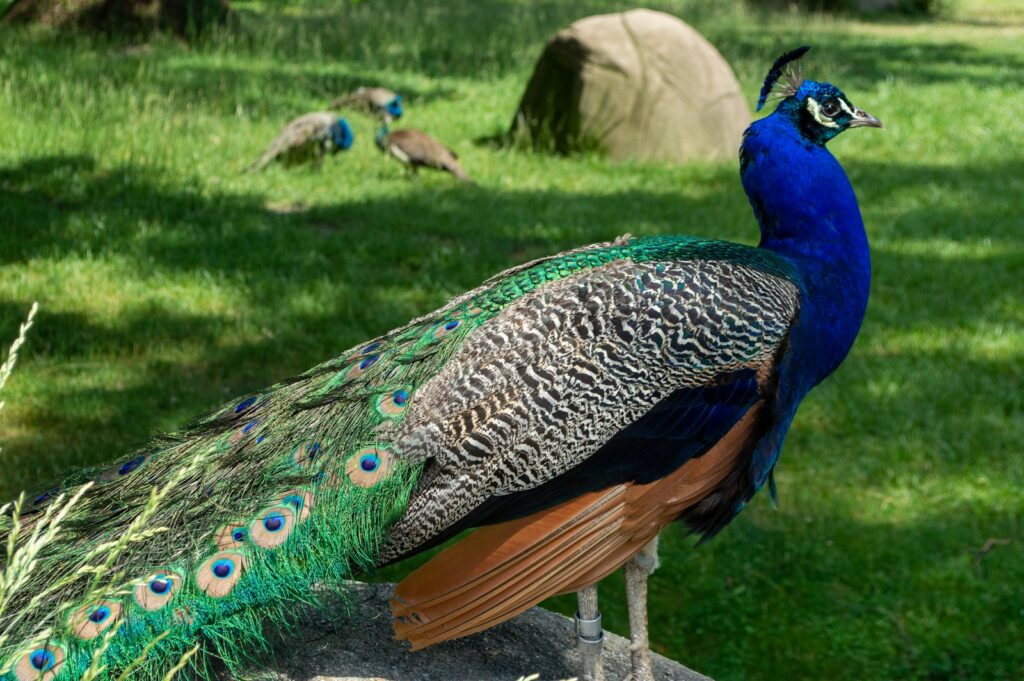
Bird plumage colors arise through two distinct mechanisms: pigmentation and structural coloration. Pigments like melanins (producing blacks, browns, and reddish hues) and carotenoids (yielding reds, oranges, and yellows) absorb certain wavelengths of light while reflecting others. More remarkable is structural coloration, where feather nanostructures—microscopic arrangements of keratin, air pockets, and melanin granules—scatter, refract, and reflect light to create blues, greens, and iridescent effects. The peacock’s shimmering tail feathers, for instance, contain no blue or green pigments at all—their colors emerge purely from light interaction with precisely arranged barbules containing melanin rods and keratin films. These structural colors often appear to shift and change as viewing angles alter, creating the mesmerizing, metallic-looking iridescence that characterizes many of the world’s most spectacular birds.
The Magnificent Quetzal: Living Jewel of Central America
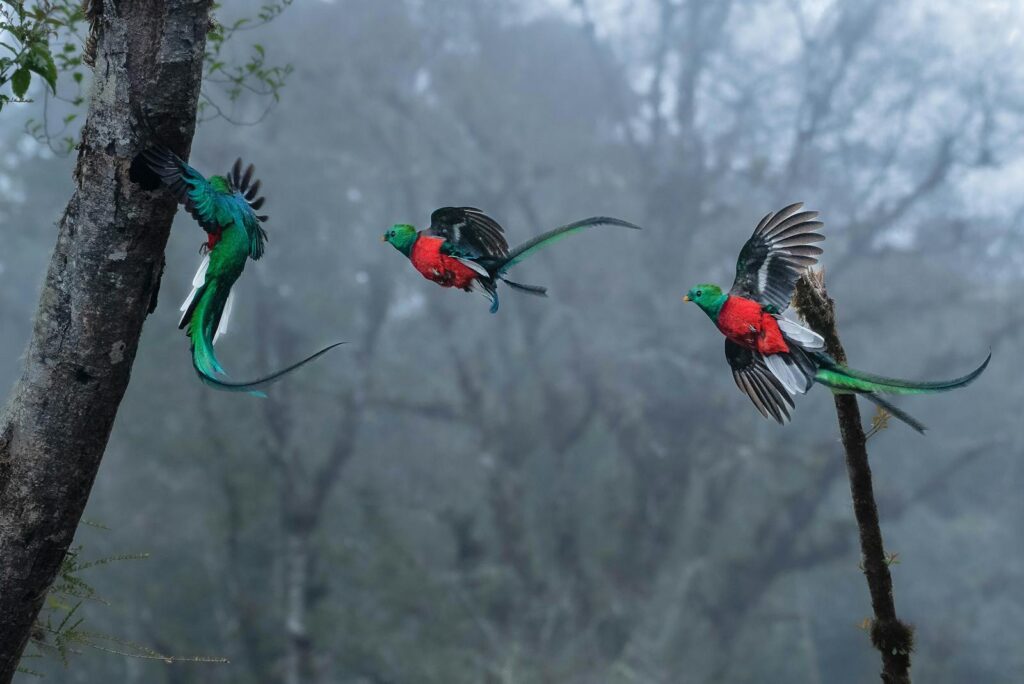
The Resplendent Quetzal (Pharomachrus mocinno) stands as one of the most spectacular birds in the Western Hemisphere, adorned with an emerald-green body that seems to glow from within. Male quetzals sport extraordinary tail coverts—not true tail feathers but specialized body feathers—that can extend up to three feet beyond their bodies, streaming behind them in flight like living ribbons. These elongated feathers display a metallic green that shifts between gold and blue depending on lighting conditions, creating an almost supernatural effect in their cloud forest habitats. Ancient Mesoamerican civilizations held the quetzal sacred; Mayan and Aztec royalty adorned themselves with its plumes, while killing the bird was punishable by death. Today, the quetzal’s breathtaking beauty continues to attract ecotourists to the cloud forests of Central America, where conservation efforts aim to protect this living embodiment of natural artistry.
Birds of Paradise: Evolution’s Fashion Extremes
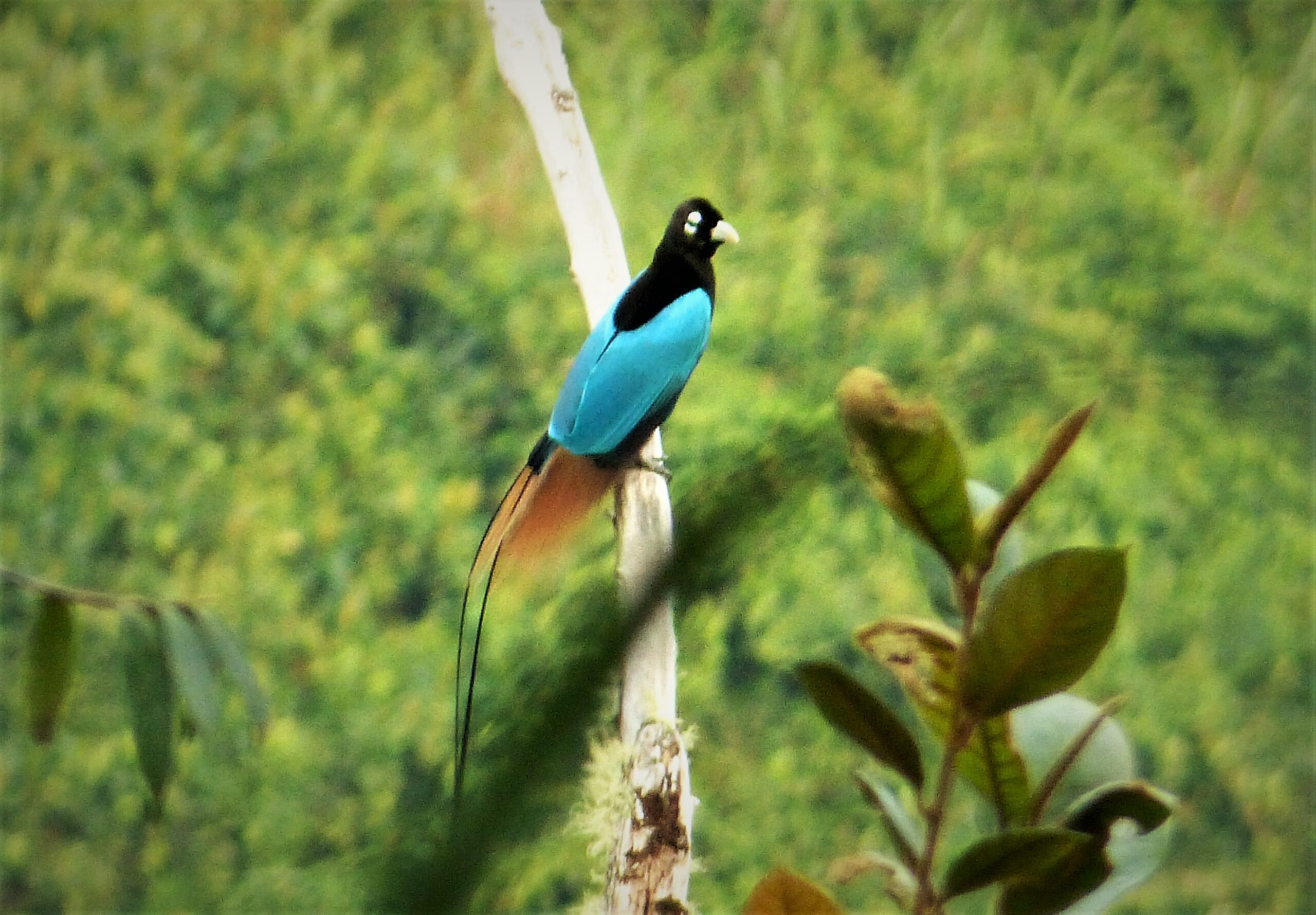
The Birds of Paradise, comprising 42 species across the Paradisaeidae family, represent perhaps the most extreme examples of plumage evolution on Earth. Native to the remote rainforests of New Guinea and surrounding islands, these birds have evolved in isolation with few predators, allowing sexual selection to drive the development of increasingly elaborate male displays. The Superb Bird of Paradise transforms himself into a smiling black oval with an electric blue “smiley face” pattern, while the Parotia performs complex dances on meticulously cleaned forest floor stages, displaying iridescent breast shields that flash different colors as they move. Perhaps most extraordinary is the male Twelve-wired Bird of Paradise, whose golden flank plumes and bizarre wire-like filaments extending from his tail create an otherworldly appearance. These extraordinary adaptations serve a single purpose: to impress extremely selective females who choose mates based on the precision and vibrancy of these elaborate courtship displays.
The Rainbow Lorikeet: Nature’s Paint Palette
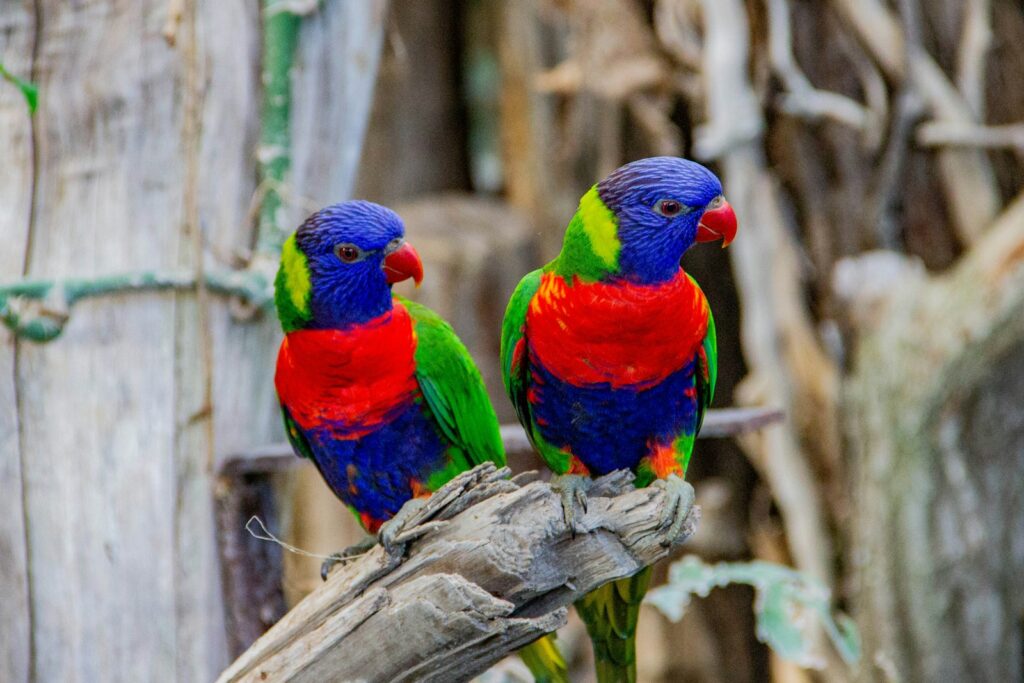
Few birds embody a full spectrum of colors as vividly as the Rainbow Lorikeet (Trichoglossus moluccanus), a small parrot native to Australia’s eastern seaboard. These birds sport a dazzling combination of colors that seem almost artificially applied—a deep blue head and belly, bright green wings and back, orange-red breast, and yellow bands where these colors meet. Unlike many colorful birds where only males display bright plumage, both male and female lorikeets share this spectacular coloration, suggesting their bright feathers serve purposes beyond mate attraction. Scientists believe their vivid appearance may help these social birds recognize flock members among the dense foliage of eucalyptus forests where they feed on nectar and pollen. Their specialized brush-tipped tongues, adapted for harvesting flower nectar, complement their flamboyant appearance, making Rainbow Lorikeets not just one of the most colorful birds but also one of the most specialized nectar feeders in the parrot family.
The Indian Peafowl: Symbol of Iridescent Splendor
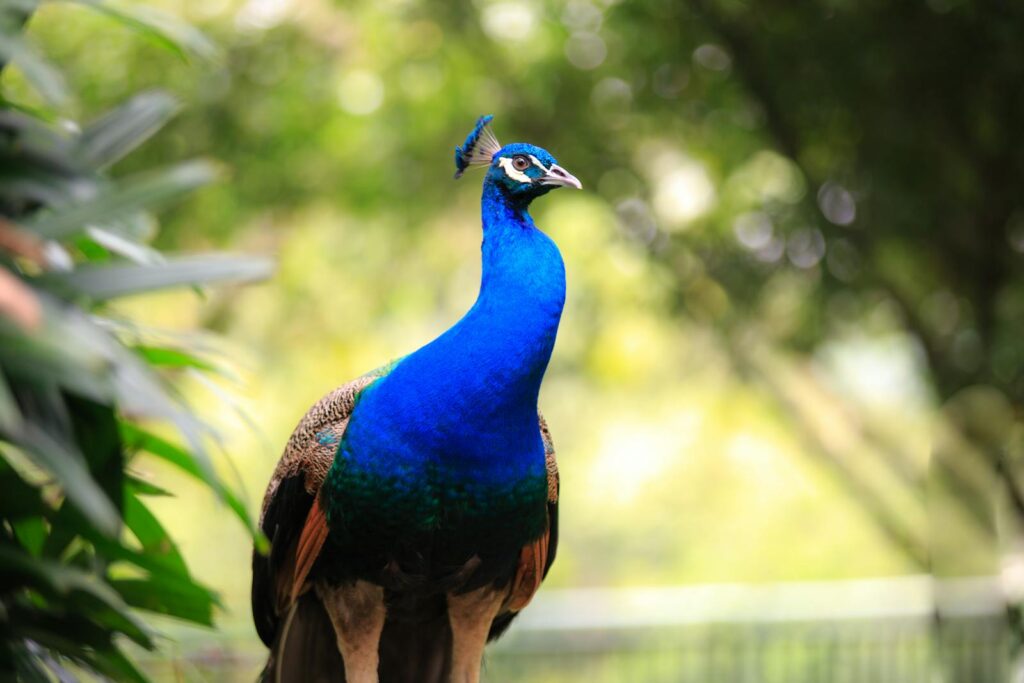
Perhaps no discussion of brilliant plumage would be complete without the Indian Peafowl (Pavo cristatus), whose male train has become synonymous with natural opulence. The peacock’s display feathers, which can number over 200 and measure up to five feet in length, aren’t actually tail feathers but elongated upper tail coverts that form the iconic fan. Each feather terminates in an “eyespot” or ocellus, containing concentric rings of blue, gold, and brown, created through complex interference patterns as light bounces through microscopic keratin structures. When displayed, these feathers create a hypnotic, shimmering effect that females assess with remarkable discrimination—peahens prefer males with more numerous, symmetrical, and vibrant eyespots. Charles Darwin cited the peacock’s tail as an apparent contradiction to natural selection, writing that “the sight of a feather in a peacock’s tail makes me sick” because its extravagance seemed counterproductive to survival. We now understand this as a classic example of sexual selection, where traits evolve not because they aid survival but because they enhance reproductive success.
Mandarin Ducks: Floating Masterpieces
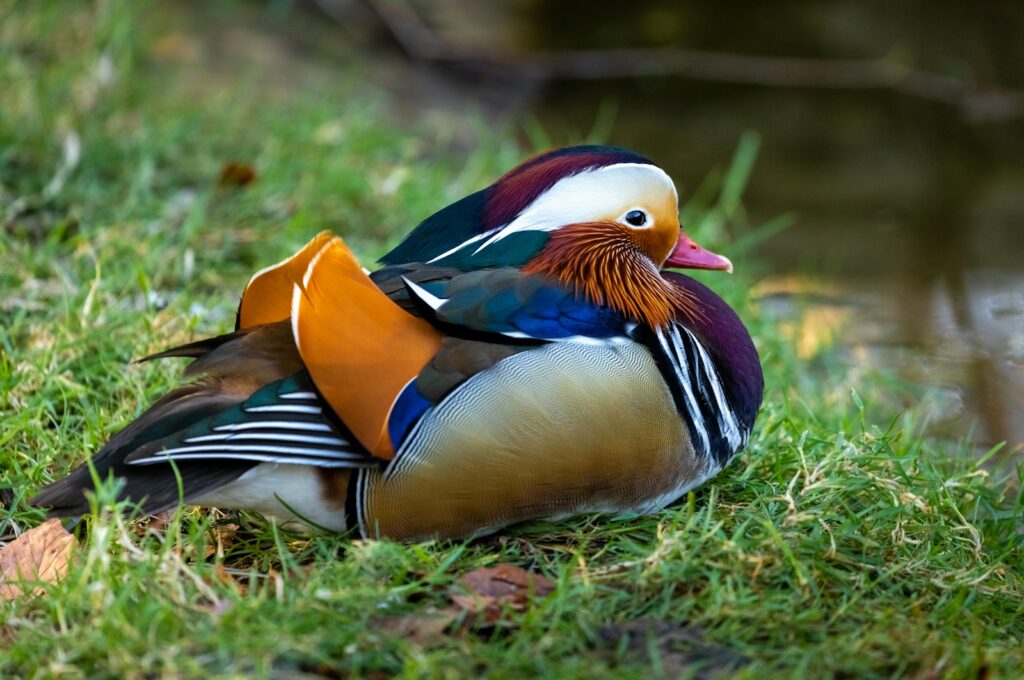
The male Mandarin Duck (Aix galericulata) presents one of the most ornate and colorful plumage patterns found in waterfowl. Native to East Asia, this medium-sized duck sports a complex arrangement of colors and textures that seem more like an artistic composition than a natural adaptation. The male’s headdress includes a metallic purple-green crest that extends down the back of his neck, complemented by distinctive orange “sails” (modified wing feathers) that stand vertically when he’s at rest on water. His face bears intricate white and black lines, while his breast shows rich maroon coloration transitioning to a golden flank adorned with black and white stripes. Perhaps most remarkable is how these colors are arranged in sharply defined geometric patterns, creating visual boundaries that separate one hue from another with almost artificial precision. Unlike many birds that molt into duller winter plumage, male Mandarins maintain their spectacular colors throughout most of the year, relinquishing them only briefly during the late summer molting period.
The Scarlet Macaw: Tropical Carnival of Color

The Scarlet Macaw (Ara macao) exemplifies flamboyant tropical coloration with its dramatic red, yellow, and blue plumage that can be spotted from remarkable distances through dense rainforest canopies. Measuring up to 33 inches from beak to tail tip, these large parrots display primarily scarlet feathers across their head, shoulders, and back, transitioning to bright yellow in the middle of their wings, followed by rich blue flight feathers. This tricolor pattern serves multiple functions in their Central and South American rainforest habitats—it helps mates locate each other across vast territories and may play a role in species recognition among the various macaw species that sometimes form mixed feeding flocks. Unlike some colorful birds that derive their hues from diet, macaws maintain their vivid coloration regardless of food sources, though they do engage in clay-eating behavior (geophagy) that may help neutralize toxins from some fruits and seeds they consume. Their breathtaking appearance combined with their intelligence and longevity (they can live 50+ years) has unfortunately made them targets for the illegal wildlife trade.
The Golden Pheasant: China’s Living Embroidery

The male Golden Pheasant (Chrysolophus pictus), native to mountainous forests in western China, appears almost like a living piece of imperial embroidery with its extraordinary combination of colors and patterns. His most striking feature is a golden-yellow crest that fans forward over his bill, complemented by a vibrant orange “cape” of squared feathers around his neck that can be raised into a dramatic ruff during courtship displays. This ornate head arrangement transitions to a brilliant red breast, deep green back, amber flanks, and a long, barred brown tail that can reach two-thirds of his body length. The color boundaries in golden pheasants are remarkably precise, creating a patchwork effect reminiscent of carefully applied paint rather than natural development. Unlike many brilliantly colored birds that inhabit open environments to maximize visibility, golden pheasants thrive in dense underbrush, where their dramatic coloration provides surprisingly effective camouflage among dappled forest light and autumn foliage. Though native only to China, their extraordinary beauty has led to their introduction worldwide as ornamental birds in parks and estates.
The Wilson’s Bird of Paradise: Small Size, Maximum Impact
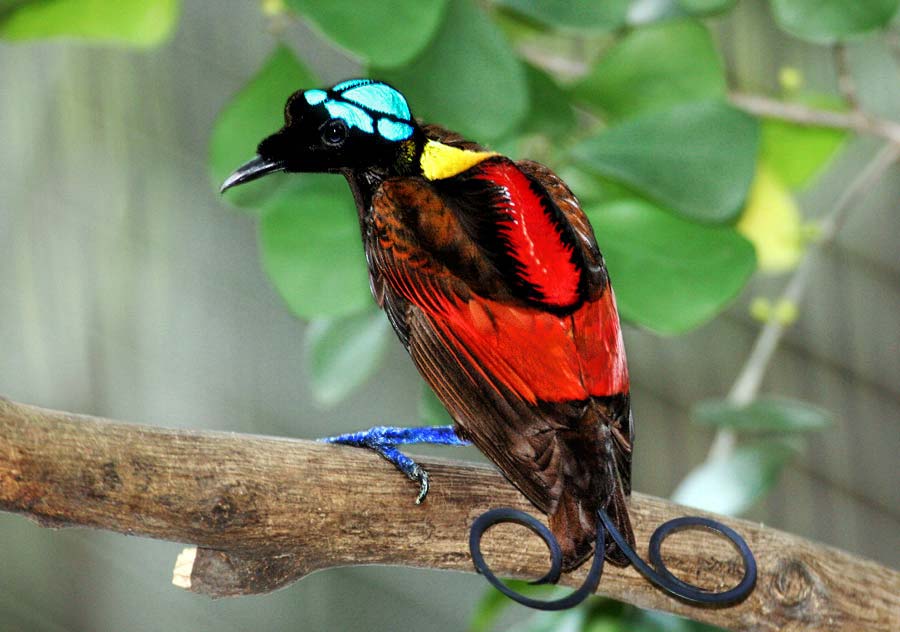
Among the most extraordinary of all birds, the Wilson’s Bird of Paradise (Cicinnurus respublica) proves that maximum visual impact doesn’t require large size. Endemic to the small islands of Waigeo and Batanta off the coast of West Papua, Indonesia, this small bird (roughly sparrow-sized) possesses perhaps the most striking color combination in nature. The male’s upper body gleams with an iridescent red and black back, contrasting with a bright yellow neck and vibrant blue feet. Most remarkable is his head, which features a curled violet tail, bare blue skin forming a cross-pattern, and a distinctive bald spot of black skin surrounded by emerald green feathers that resemble a shining disk when viewed from above. During courtship, males meticulously clean a small display area on the forest floor, removing every leaf and twig to create a stage against which their colors appear even more vibrant to watching females. Their spectacular plumage remained largely unknown to the outside world until relatively recently, when wildlife photographers and documentary teams captured their extraordinary appearance and behaviors for global audiences.
Nicobar Pigeons: Unexpected Avian Glamour
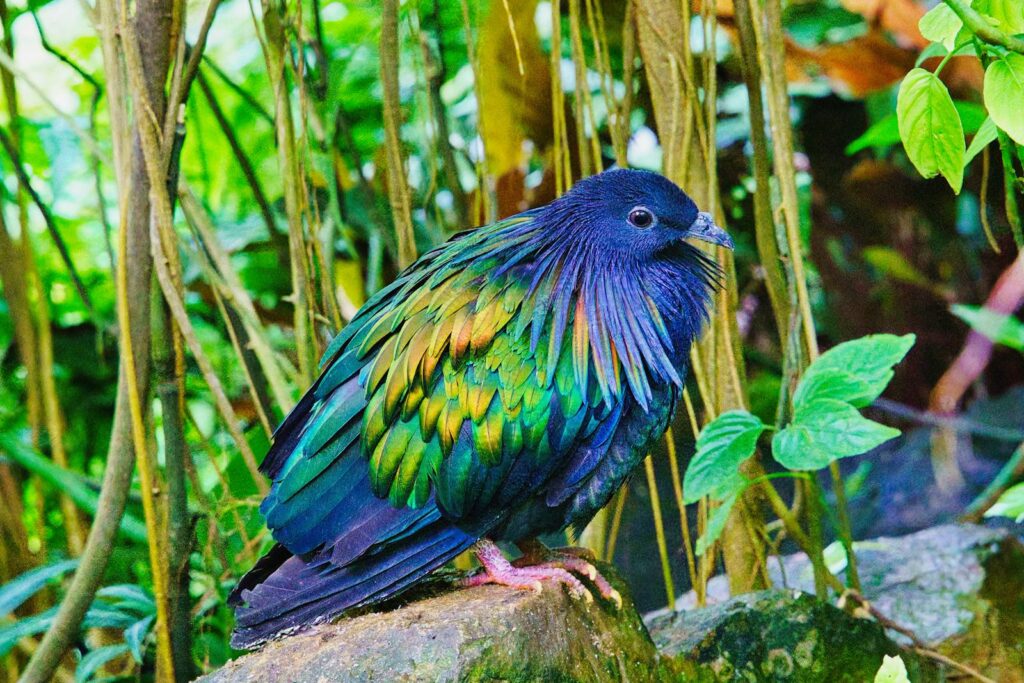
While pigeons rarely feature in discussions of beautiful plumage, the Nicobar Pigeon (Caloenas nicobarica) stands as a striking exception to this rule. Found on small islands and coastal regions from the Nicobar Islands through Southeast Asia to the Solomon Islands, these large pigeons sport an extraordinary metallic plumage that transitions through multiple colors. Their head and throat appear dark slate or blackish, while their neck feathers are elongated into a distinctive ruff or hackles that shimmer with iridescent blue, copper, green and bronze—colors that shift dramatically as the light changes. This colorful display contrasts with their white tail and grey legs and feet, creating an elegant yet flamboyant appearance. The Nicobar Pigeon is also notable as the closest living relative to the extinct Dodo bird, though with a dramatically different appearance than its famous cousin. Unlike many colorful birds where males alone bear bright plumage, both sexes of Nicobar Pigeons share this metallic splendor, though females typically display slightly more subdued coloration.
The Lilac-breasted Roller: African Sky Jewel
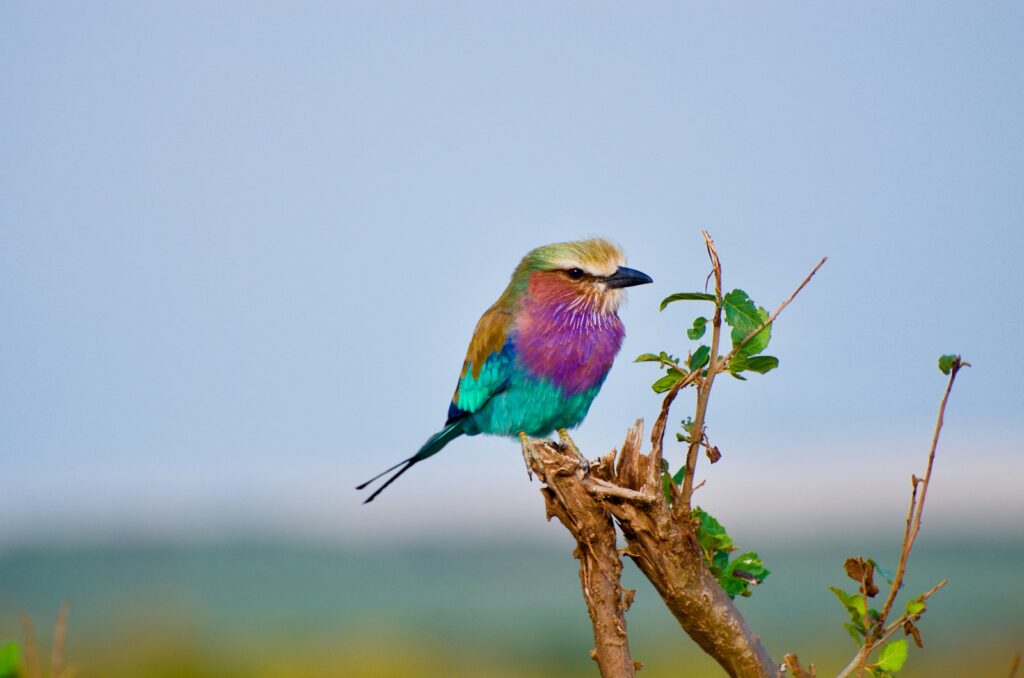
Against the golden savannas and acacia trees of eastern and southern Africa, the Lilac-breasted Roller (Coracias caudatus) appears like a jewel fallen from the sky. This medium-sized bird exhibits an extraordinary palette of colors that seem almost artificially designed—its head and back display varying shades of green, transitioning to a lilac-pink breast that gives the bird its name. The underparts show a gradient from lilac to turquoise, while the wings reveal striking ultramarine blue flight feathers most visible during the bird’s spectacular rolling courtship flight. This aerial display, from which rollers derive their name, involves fast, shallow dives from considerable height, rolling sideways with wings alternately opened and closed while emitting harsh vocalizations. Beyond its spectacular appearance, the lilac-breasted roller exhibits fascinating behavioral traits, including its hunting style of perching prominently on exposed branches before diving to catch insects, small reptiles, or even scorpions. The bird’s prevalence near roadsides throughout its range has made it one of Africa’s most frequently photographed avian species and a favorite among safari-goers.
The Role of Diet in Plumage Coloration
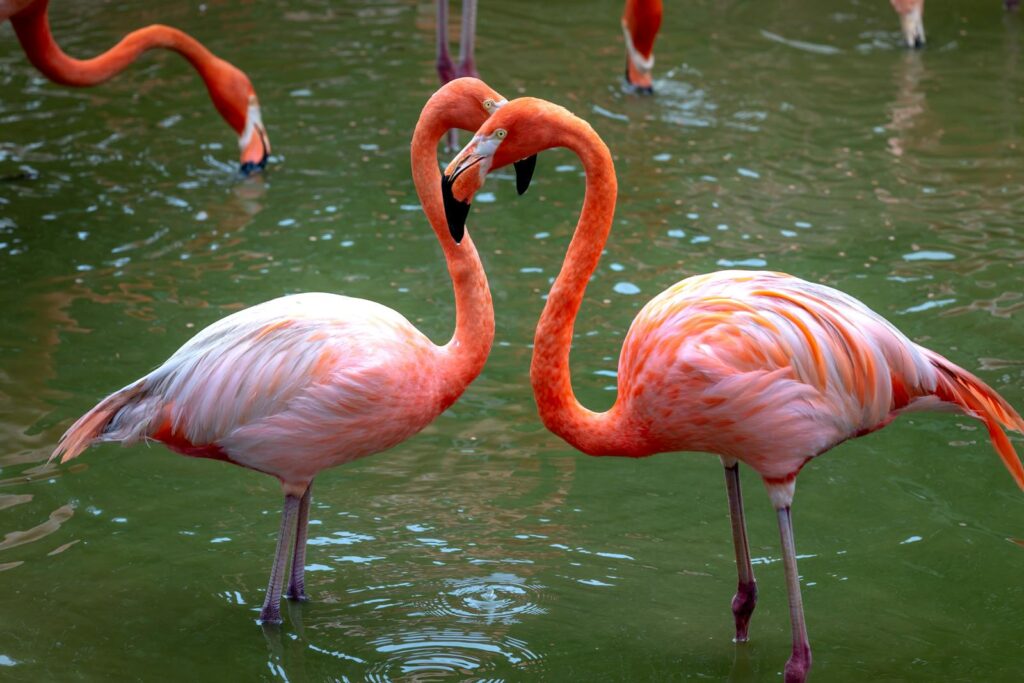
While many birds’ colors derive from structural features, others directly reflect their diet through pigments called carotenoids—compounds that birds cannot synthesize themselves but must obtain through food. Flamingos provide the most famous example, obtaining their pink coloration from carotenoid-rich algae and crustaceans they filter from water with specialized bills. Similarly, male House Finches develop brighter red plumage when consuming more carotenoid-rich berries during feather development. The connection between diet and coloration extends to other species like canaries, whose intensity of yellow correlates directly with carotenoid intake, and some parrots whose vibrant reds derive partly from selectively concentrating certain plant pigments. This dietary dependence creates a natural “honesty” to carotenoid-based coloration, as only the healthiest birds capable of finding the most nutritious foods develop the brightest colors—precisely why females often prefer the most colorful males as mates. Research has shown that carotenoids serve dual purposes, functioning both as colorants and as important components of the immune system, meaning a brightly colored bird signals not just beauty but robust health.
Beyond Birds: Other Animals with Spectacular Coloration
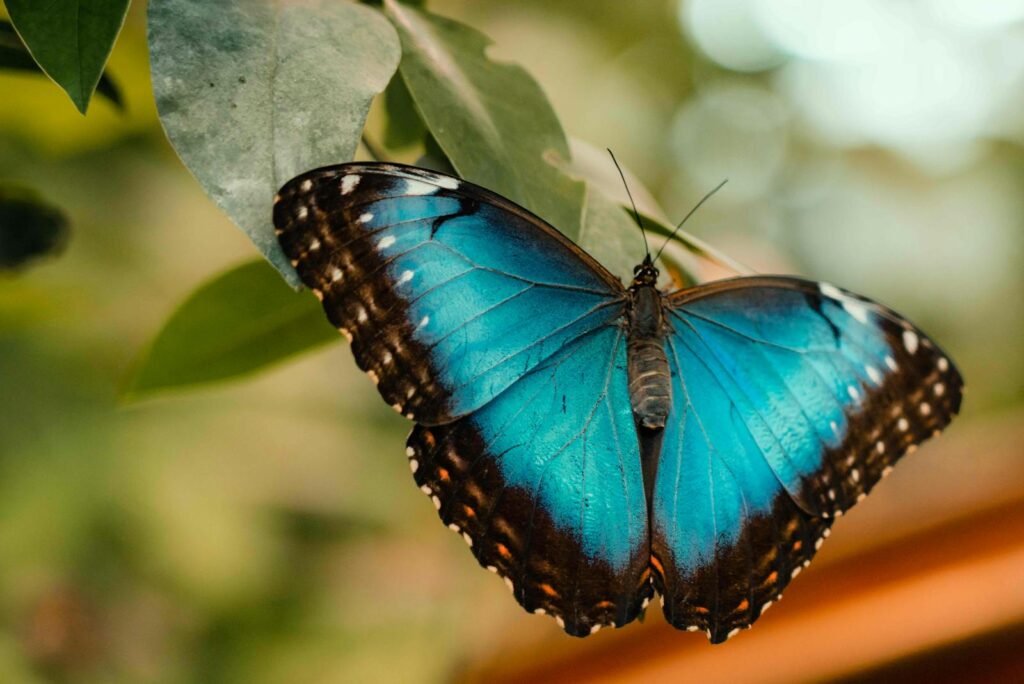
While birds dominate discussions of brilliant natural coloration, remarkable examples exist throughout the animal kingdom. The Mandarin fish, a small reef-dwelling species, displays an almost psychedelic pattern of swirling blue, orange, and green that rivals any bird’s plumage. Certain butterflies, particularly the blue morpho, produce iridescent wings through the same structural color principles found in bird feathers. Among reptiles, the male Parson’s chameleon can display an extraordinary range of blues and greens across its body. Perhaps most similar to bird plumage are the extraordinary feather-like modified scales of various nudibranch sea slugs, such as the Spanish dancer, which unfurl magnificent red and orange “skirts” as they swim. Even mammals, despite generally being less colorful than other animal groups, include exceptions like the striking facial coloration of male mandrills, whose faces feature vivid blue ridges and bright red noses that indicate dominance status. These examples demonstrate how the evolutionary advantages of bright coloration—mate attraction, species recognition, and predator warning—have independently developed across diverse animal groups.
Conservation Challenges for Colorful Species
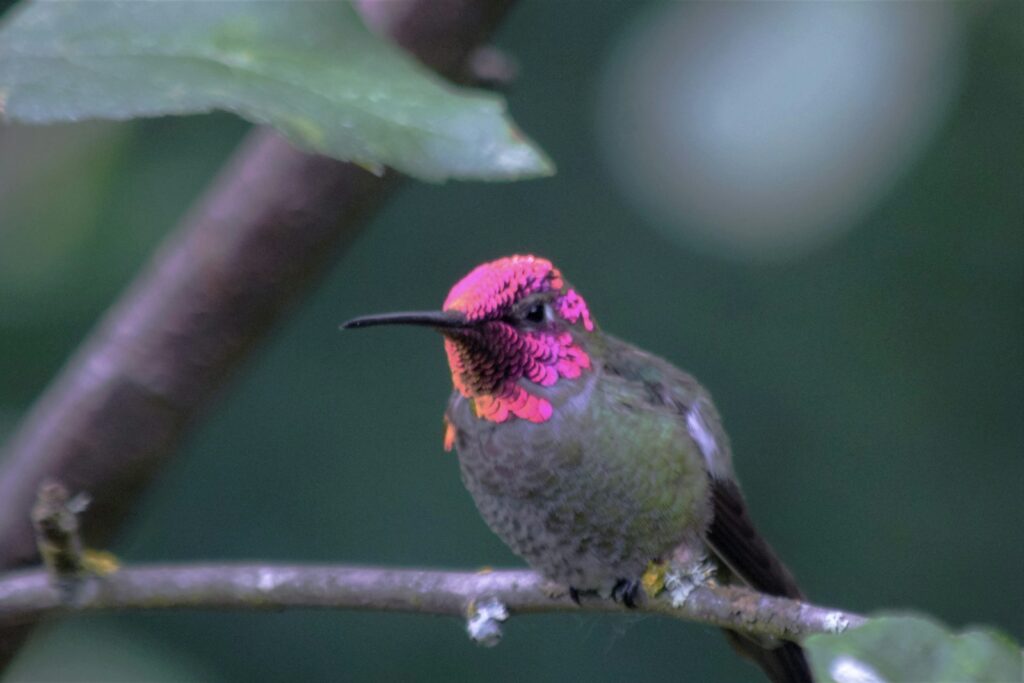
The very qualities that make brilliantly colored birds so remarkable often place them at elevated conservation risk. Throughout history, humans have coveted bright plumage for decorative purposes—from Victorian-era hat ornaments that drove some hummingbird species to near extinction to the continued illegal trade in parrot feathers and live birds. Habitat loss represents another critical threat, particularly for specialized species like Birds of Paradise that require pristine forest environments. The quetzal, dependent on specific cloud forest habitats, faces mounting pressure from deforestation across its Central American range. Climate change introduces additional challenges, potentially disrupting food sources like flowering or fruiting cycles that many colorful species depend upon. For carotenoid-dependent species, environmental changes affecting insect or plant populations can directly impact their ability to maintain bright coloration, potentially disrupting mating systems evolved over millions of years. Conservation efforts for these species increasingly focus not just on habitat protection but on disrupting wildlife trafficking networks and establishing sustainable ecotourism programs that create economic incentives for local communities to protect rather than exploit these living natural treasures.
The spectacular diversity of plumage throughout the animal kingdom represents one of nature’s most extraordinary achievements—where function and beauty merge in displays that continue to inspire human art, fashion, and scientific inquiry. From the physics of structural coloration to the ecological significance of bright displays, these natural color shows reveal the remarkable creativity of evolutionary processes. While we marvel at these living rainbows, we must also recognize our responsibility to protect them, ensuring that future generations can witness these extraordinary expressions of natural splendor
